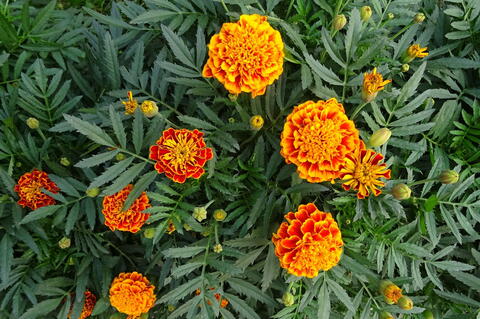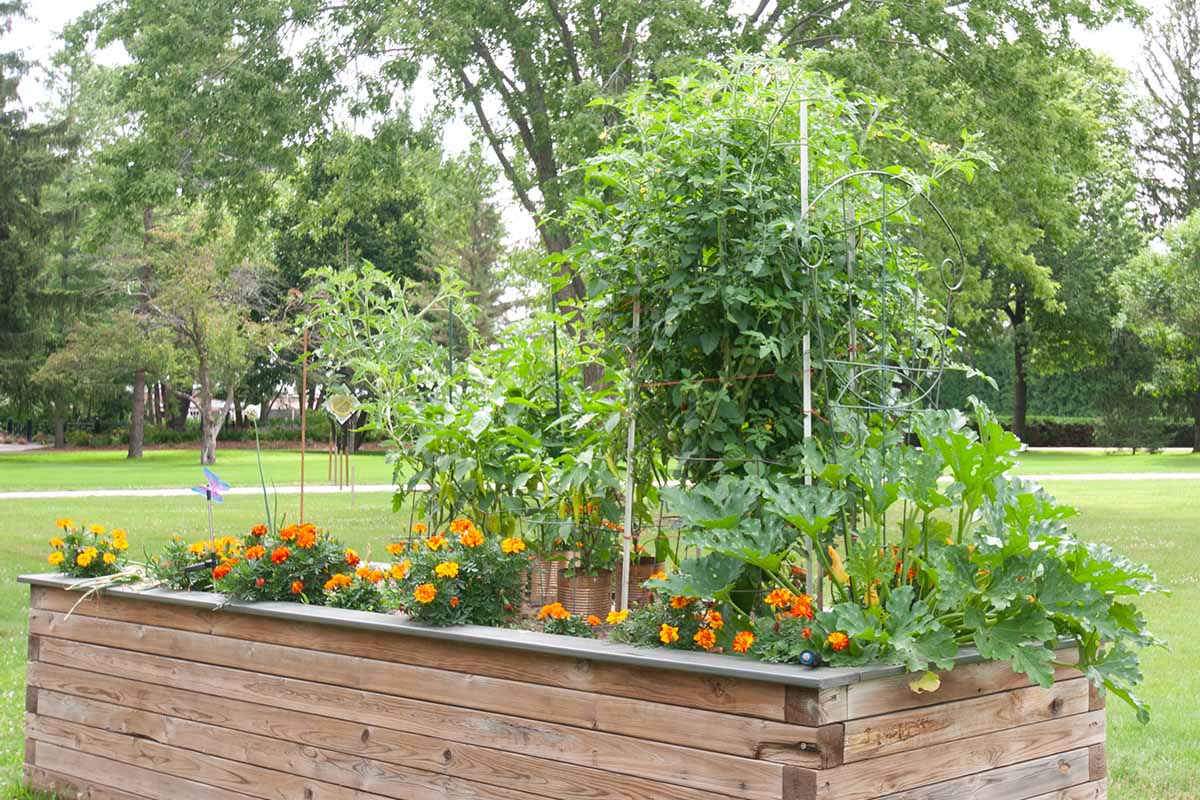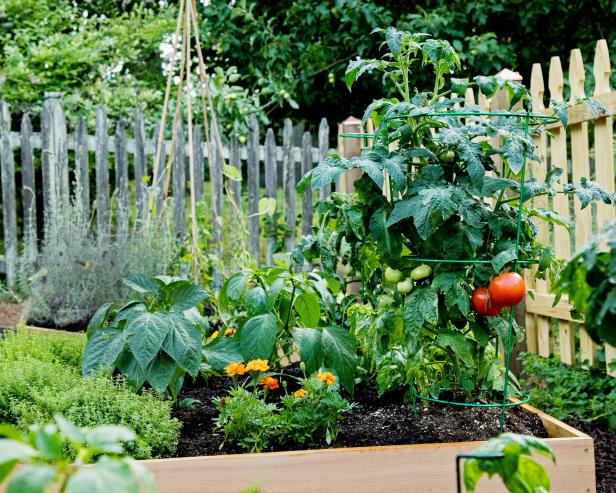Best Partner Plants For Tomatoes
Title: The Best Partner Plants for Tomatoes
Introduction:
Tomatoes are a popular and delicious vegetable that can be grown in many different climates. However, there are some plants that can help to improve the growth and productivity of tomato plants, while others can actually harm them. This blog post will discuss the best partner plants for tomatoes, as well as some plants that should be avoided.
Main Content:
There are many different plants that can be grown alongside tomatoes, but some of the best include:
- Basil: Basil is a classic companion plant for tomatoes, and for good reason. The strong scent of basil helps to repel pests such as aphids, tomato hornworms, and whiteflies. Basil also attracts beneficial insects such as ladybugs and hoverflies, which help to control pests.
- Marigolds: Marigolds are another excellent companion plant for tomatoes. The strong scent of marigolds helps to repel nematodes, which can damage tomato roots. Marigolds also attract beneficial insects such as parasitic wasps, which help to control tomato pests.

- Chives: Chives are a good companion plant for tomatoes because they help to improve the flavor of the tomatoes. Chives also attract beneficial insects such as bees and butterflies, which help to pollinate the tomato plants.

- Borage: Borage is a flowering plant that is a good companion plant for tomatoes because it helps to attract beneficial insects such as ladybugs and hoverflies. Borage also helps to improve the flavor of the tomatoes.

- Nasturtiums: Nasturtiums are a colorful and edible flower that is a good companion plant for tomatoes. Nasturtiums help to attract beneficial insects such as ladybugs and lacewings, which help to control tomato pests. Nasturtiums also help to deter rabbits and other pests from eating tomato plants.

- Beans: Beans are a good companion plant for tomatoes because they help to fix nitrogen in the soil. This means that beans can help to improve the fertility of the soil, which can benefit the tomato plants. Beans also help to shade the soil around the tomato plants, which can help to suppress weeds.

- Peas: Peas are another good nitrogen-fixing plant that can be grown alongside tomatoes. Peas also help to improve the drainage of the soil, which can benefit tomato plants.
Conclusion:
By planting the right companion plants alongside your tomato plants, you can help to improve their growth and productivity. The plants listed above are just a few of the many good companion plants for tomatoes. With a little research, you can find the perfect companion plants for your garden.
There are many different companion plants that can be grown with tomatoes to improve their growth and productivity. Some of the best partner plants for tomatoes include:
- Basil: Basil is a classic companion plant for tomatoes, and it helps to deter pests and attract pollinators.
- Cucumbers: Cucumbers and tomatoes can be grown together because they have similar growing requirements.
- Herbs: Other herbs, such as mint, oregano, and parsley, can also be grown with tomatoes to help repel pests and improve the flavor of the tomatoes.
- Marigolds: Marigolds are a great companion plant for tomatoes because they help to attract beneficial insects that prey on tomato pests.
For more information about companion plants for tomatoes, visit Home Gardening.
FAQ of partner plants for tomatoes
- What are the best companion plants for tomatoes?
Some of the best companion plants for tomatoes include:
Basil: Basil is a classic companion plant for tomatoes, and for good reason. It helps to repel pests like aphids, and it also enhances the flavor of tomatoes.
Marigolds: Marigolds are another great companion plant for tomatoes. They help to repel nematodes, which are pests that can damage tomato roots.
Borage: Borage is a flowering herb that helps to attract beneficial insects, such as ladybugs and hoverflies. These insects help to control pests that can damage tomatoes.
Chives: Chives are a pungent herb that helps to repel pests like mosquitoes and ants. They also help to improve the flavor of tomatoes.
Asparagus: Asparagus is a nitrogen-fixing plant, which means that it helps to improve the soil quality for tomatoes.
What are some plants that should not be planted near tomatoes?
Some plants that should not be planted near tomatoes include:
Cabbage: Cabbage is a member of the brassica family, and planting it near tomatoes can stunt the growth of the tomato plants.
Corn: Corn can compete with tomato plants for water and nutrients.
Broccoli: Broccoli is another member of the brassica family, and it should not be planted near tomatoes for the same reason as cabbage.
Fennel: Fennel can interfere with the pollination of tomato plants.
Dill: Dill can attract pests that can damage tomato plants.
Potatoes: Potatoes and tomatoes are both susceptible to the same pests and diseases, so it is best to avoid planting them near each other.
Eggplant: Eggplant is a member of the nightshade family, and it should not be planted near tomatoes because they can cross-pollinate.
Walnuts: Walnut trees release a toxin that can stunt the growth of tomato plants.
How far apart should companion plants be planted?
The distance between companion plants will vary depending on the specific plants involved. However, as a general rule of thumb, you should plant companion plants at least 12 inches apart. This will give the plants enough space to grow and thrive.
- What are the benefits of companion planting with tomatoes?
There are many benefits to companion planting with tomatoes. Some of the benefits include:
- Increased pollination: Companion plants can attract beneficial insects, such as bees and butterflies, which help to pollinate tomato plants.
- Reduced pest pressure: Companion plants can help to repel pests that can damage tomato plants.
- Improved soil quality: Some companion plants, such as asparagus, are nitrogen-fixing plants, which means that they help to improve the soil quality for tomatoes.
- Enhanced flavor: Some companion plants, such as basil, can enhance the flavor of tomatoes.
Image of partner plants for tomatoes
10 different images of partner plants for tomatoes that are free to use:
- Basil: Basil is a classic companion plant for tomatoes, and for good reason. It helps to deter pests, attract beneficial insects, and improve the flavor of tomatoes.
- Marigolds: Marigolds are another great companion plant for tomatoes. They help to repel nematodes, which are a common pest of tomatoes.

- Chives: Chives are a good companion plant for tomatoes because they help to improve the flavor of tomatoes. They also help to deter pests, such as aphids and spider mites.
- Nasturtiums: Nasturtiums are a beautiful and beneficial companion plant for tomatoes. They help to deter pests, such as aphids and whiteflies. They also attract beneficial insects, such as ladybugs and hoverflies.

- Cucumbers: Cucumbers and tomatoes can be planted together because they have similar growing requirements. They also help to deter each other's pests.
- Beans: Beans and tomatoes can be planted together because they help to fix nitrogen in the soil. This means that they can help to improve the fertility of the soil, which can benefit both plants.
- Spinach: Spinach and tomatoes can be planted together because they have different growing habits. Spinach is a cool-season crop, while tomatoes are a warm-season crop. This means that they can be planted together so that they can both be harvested throughout the season.

- Lettuce: Lettuce and tomatoes can be planted together because they have different water requirements. Lettuce needs more water than tomatoes, so planting them together can help to ensure that both plants get the water they need.

- Peas: Peas and tomatoes can be planted together because they help to attract beneficial insects. Peas attract hoverflies, which are a natural predator of aphids.
Post a Comment for " Best Partner Plants For Tomatoes"